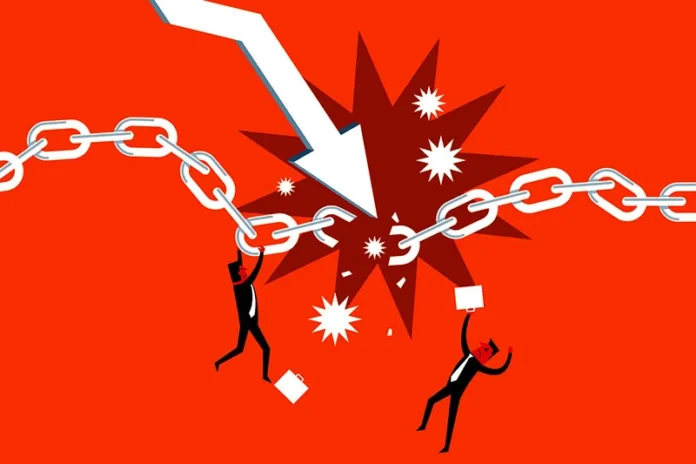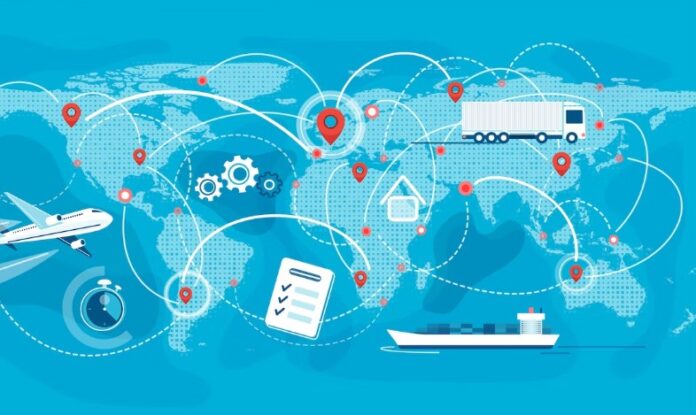In today’s global business landscape, supply chain disruptions have become common. From natural disasters to political unrest, these disruptions can cause significant harm to businesses, including lost revenue, increased costs, and damaged reputation.
However, by implementing end-to-end supply chain visibility, businesses can mitigate these disruptions and ensure the smooth flow of goods and services. In this article, we’ll explore the role of end-to-end supply chain visibility in mitigating supply chain disruptions and the different components that contribute to its success.
A. Explanation Of Supply Chain Disruptions And Their Impact On Businesses

The supply chain process iolves a complex network of suppliers, manufacturers, distributors, and retailers working together to deliver products to customers. Disruptions to this process can occur at any point in the supply chain, causing delays, shortages, and increased costs. Such disruptions can be caused by natural disasters, labor strikes, geopolitical issues, or even cyber-attacks. Regardless of the cause, these disruptions can significantly impact businesses, leading to decreased revenue, increased costs, and damaged reputation.
B. Overview Of The Role Of End-To-End Supply Chain Visibility In Mitigating Supply Chain Disruptions
End-to-end supply chain visibility refers to the ability of businesses to track their products and inventory at every stage of the supply chain, from raw materials to finished goods. This visibility allows businesses to quickly identify and address disruptions, minimizing their operations’ impact. End-to-end supply chain visibility relies on supply chain visibility software, which enables real-time tracking and monitoring of inventory, orders, and shipments.
II. The Need for End-to-End Supply Chain Visibility

1. Identification Of The Different Disruptions That Can Occur In A Supply Chain
Supply chain disruptions can take different types of software for, including natural disasters, geopolitical issues, labor strikes, transportation delays, and supplier bankruptcies. Each type of disruption can have an extraordinary impact on the supply chain, and it is essential to identify and prepare for these disruptions.
2. Discussion Of The Costs And Consequences Of Supply Chain Disruptions
Businesses may face increased costs due to expedited shipping, lost revenue due to delayed or canceled orders, and damaged reputation due to poor customer service. Additionally, supply chain disruptions can lead to supply shortages, putting businesses at risk of losing market share to competitors.
III. The Components of End-to-End Supply Chain Visibility

1. Identification Of The Different Components Of End-To-End Supply Chain Visibility
Real-time tracking enables businesses to track their products and inventory at every stage of the supply chain, from raw materials to finished goods. Inventory management ensures that businesses maintain adequate inventory levels to meet customer demand, while demand forecasting enables businesses to predict future demand and adjust their operations accordingly. Finally, supplier relationship management involves managing relationships with suppliers to ensure timely delivery of goods and services.
2. Explanation Of How Each Component Contributes To Reducing Supply Chain Disruptions
Each component of end-to-end supply chain visibility is crucial in reducing disruptions. Real-time tracking enables businesses to identify disruptions and take corrective action quickly, while inventory management and demand forecasting help businesses maintain adequate inventory levels and avoid supply shortages. Finally, supplier relationship management ensures the timely delivery of goods and services, reducing the risk of disruptions caused by supplier bankruptcies or delays.
IV. Benefits of End-to-End Supply Chain Visibility in Mitigating Disruptions

End-to-end supply chain visibility benefits businesses, including increased efficiency, reduced costs, and improved customer service. By enabling businesses to quickly identify and address disruptions, end-to-end visibility helps minimize disruptions’ impact on business operations.
One of the primary benefits of end-to-end supply chain visibility is increased efficiency. When businesses have a complete view of their supply chain process flow, they can more easily identify inefficiencies and take steps to streamline their operations. For example, end-to-end supply chain visibility can help businesses optimize inventory management by providing real-time visibility into inventory levels and demand forecasts. This can help businesses reduce inventory carrying costs while ensuring they have the right products in stock to meet customer demand.
Another benefit of end-to-end supply chain visibility is reduced costs. By enabling businesses to quickly identify and address disruptions, end-to-end visibility can help to minimize the costs associated with disruptions, such as lost sales, increased transportation costs, and overtime expenses. In addition, end-to-end supply chain visibility can help businesses optimize their sourcing strategy by providing visibility into supplier performance and enabling them to identify opportunities to reduce costs and improve efficiency.
V. Challenges to Implementing End-to-End Supply Chain Visibility
Implementing end-to-end supply chain visibility can be a complex automotive supply chain process that involves several challenges. In this section, we will discuss some common challenges companies face when implementing end-to-end supply chain visibility. We will provide strategies for overcoming these challenges.
A. Discussion Of The Challenges That Companies Face In Implementing End-To-End Supply Chain Visibility
Data integration: One of the biggest challenges companies face when implementing end-to-end supply chain management is data integration. End-to-end supply chain visibility requires integrating data from multiple systems and sources, which can be time-consuming and complex. Companies may face challenges integrating data from different systems, formats, and locations.
Technology adoption: Another challenge that companies face is technology adoption.
Implementing end-to-end supply chain visibility requires advanced IoT, blockchain, and cloud computing technologies. Adopting these technologies can be a significant investment for companies, and it may require significant time and resources.
Organizational change: Implementing end-to-end supply chain visibility may require significant changes to an organization’s structure and processes. Companies may need to change their internal processes, training, and communication methods to ensure everyone is aligned with the new supply chain visibility strategy.
B. Explanation Of Strategies For Overcoming These Challenges

Data integration: Companies can use data integration tools and platforms to overcome the data integration challenge. These visibility tools and platforms can help companies to integrate data from multiple systems and sources and ensure that the data is accurate and up-to-date. Companies can also consider using APIs to connect different systems and applications.
Technology adoption: To overcome the challenge of technology adoption, companies can start by identifying the technologies most relevant to their supply chain visibility needs. Companies can then create a technology adoption roadmap that outlines the steps required to implement these technologies. Companies can also consider partnering with technology providers to help them implement new technologies.
Organizational change: To overcome the challenge of organizational change, companies can create a change management plan that outlines the steps required to transition to the new supply chain visibility strategy. Companies can also provide training and support to employees to ensure they understand the new processes and can use the new technologies effectively.
Overall, implementing end-to-end supply chain visibility can be a complex and challenging process. However, by understanding the challenges and developing strategic software to overcome them, companies can reap the benefits of improved efficiency, reduced costs, and improved customer service.









